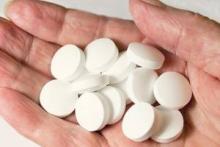SAN FRANCISCO – Updated national guidelines on calcium and vitamin D intake should be followed only loosely, cautioned Dr. Deborah E. Sellmeyer, director of the Metabolic Bone Center at Johns Hopkins University, Baltimore.
There’s a lot of controversy surrounding the Institute of Medicine’s (IOM) November 2010 report, "Dietary Reference Intakes for Calcium and Vitamin D," which updated 1997 guidelines. Dr. Sellmeyer uses the latest IOM report as a starting point and then tailors the recommendations to meet the needs of her individual patients. And as a result, the amounts of vitamin D and calcium that her patients take usually vary from the guidelines, she said at a conference on osteoporosis sponsored by the University of California, San Francisco.
There is uncertainty about the cutoff level of serum vitamin D that’s considered adequate and the potential side effects from ingesting too much calcium, she said.
The IOM recommends that adults take 600 IU/day through age 50 and 800 IU/day for those aged 51 years and older, with a suggested upper tolerability limit of 4,000 IU/day. Those are the intake amounts that generally would be needed to reach a serum level of 20 ng/mL.
Many experts, however, think that physiologic and fracture data suggest that a "sufficient" serum level should be in the 30-32 ng/mL range, she said. "It takes most people about 1,200 IU/day to reach that" serum level, said Dr. Sellmeyer, who advises her patients to get 1,200 IU/day of vitamin D.
A 2010 study of high-dose vitamin D and fracture risk caused "a lot of consternation," she noted. The double-blind trial randomized 2,256 older women to a once-yearly oral dose of 500,000 IU cholecalciferol or placebo, and found higher rates of falls and fractures in the vitamin D group (JAMA 2010;303:1815-22).
"It’s almost a moot point because you wouldn’t give 500,000 IU once a year, but it did raise the idea that there may be some administration techniques, some regimens that would not be beneficial," Dr. Sellmeyer said.
The IOM committee that compiled the 2010 report expressed a great deal of concern about a potentially higher mortality risk with excessively high vitamin D serum levels. The concern was sparked by the committee’s interpretation of an analysis of data from the Third National Health and Nutrition Examination Survey. Overall, that survey documented higher mortality rates in patients in the lowest quartile of serum vitamin D levels (Arch. Intern. Med. 2008;168:1629-37). However, the IOM committee noticed a statistically nonsignificant dip in mortality risk between the highest and second-highest quartiles of serum vitamin D before the mortality risk increased in each of the two lowest quartiles, constituting what some saw as a J-shaped curve to mortality risk.
Numerically, the lowest mortality was in patients with 24-32 ng/mL of serum vitamin D, but this was statistically not significantly different than in patients with a serum level greater than 32 ng/mL.
"I’m really not sure that there is a higher mortality," Dr. Sellmeyer said. "I think there is enough evidence to suggest that we probably ought to be a little more in the 30-40 ng/mL range."
The IOM recommends that adult males get 1,000 mg/day of calcium through age 70 years and 1,200 mg/day for those who are older. Adult women should get 1,000 mg/day through age 50 and 1,200 mg/day in older ages. The maximum tolerability limits were set at 2,500 mg/day for adults younger than 50 years or 2,000 mg/day for older adults.
It’s important to remember that the recommended level includes both dietary and supplemental sources of calcium, she emphasized. "We see a lot of women who are taking 1,200-1,500 mg/day in supplements and also drinking two glasses of milk a day," she said. "Those [are the patients who] can get into trouble."
There are no data to suggest that ingesting more than 1,200 mg/day is better for skeletal health, and high doses of calcium increase the risk of developing kidney stones, studies show.
The most controversial aspect of calcium supplementation in recent years has been some preliminary evidence of a possible increased risk for vascular calcification with higher doses of calcium.
Initially, an analysis of data on 36,282 participants in the Women’s Health Initiative (WHI) who were randomized to take 500 mg calcium carbonate with 200 IU vitamin D twice daily found no effect on risk of myocardial infarction (MI) or vascular calcification (Circulation 2007;115:846-54).



